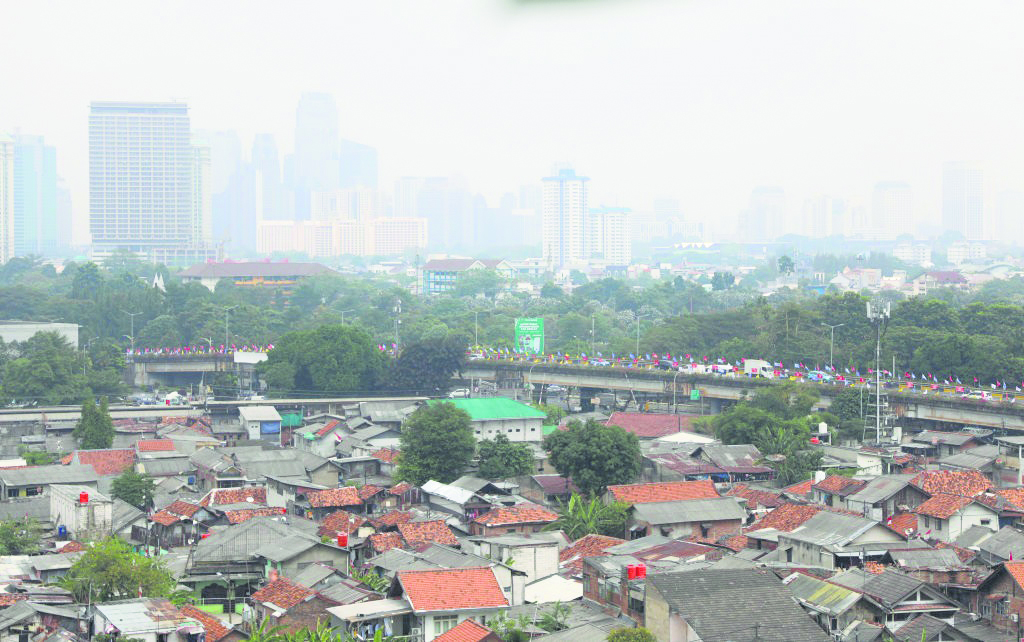
Against the backdrop of smokestacks from a nearby coal power plant, the sky above Edy Suryana’s village stays grey for months at a time, while ashes and the stench of smoke hang in the air. Suryana has spent more than three decades living in the shadow of the power plant in northern Java, just 60 miles from Jakarta, Indonesia’s most populous city. She and other villagers have watched as their loved ones suffered from coughing fits, itchy skin and other health problems that many believe are partly because of the ever-present smog.
Pollution is causing a rise in respiratory illnesses and deaths in northern Java, including Jakarta, experts say. Smog in the metropolis of 11.2 million people comes from a combination of the coal-fired plants, vehicle and motorcycle exhaust, trash burning and industries, and many in the city are demanding that the government take action.
Emissions from coal-fired power plants contribute to greenhouse gases that rise into the atmosphere and help heat the planet, a key focus of the United Nations climate conference, or COP28, which begins next week in Dubai. Countries like Indonesia are struggling to balance rising demand to power industrialisation with the need to cut carbon emissions and protect public health. In 2010 Suryana watched as his sister-in-law died from lung problems. In 2019, the dirty air seemed to worsen his daughter’s bout of tuberculosis.
“We’ve clearly suffered an impact,” he told The Associated Press.
Data gathered by IQ Air, a Swiss air technology company, regularly ranks Jakarta as one of the most polluted cities in the world. Blue skies are a rare sight and the air often smells like petrol or heavy smoke. Normally healthy residents complain of itchy eyes and sore throats on days when pollution levels soar past levels considered safe by the World Health Organisation and Indonesian government.
Air pollution potentially contributed to more than 10,000 deaths and 5,000 hospitalisations in Jakarta in 2019, according to research conducted by Vital Strategies, a global health public health nongovernmental organisation that is headquartered in New York. Pollution levels get and stay so high that it’s not safe for people to do outdoor activities without risking short and long-term damage to their health, said Ginanjar Syuhada, a health analyst at Vital Strategies. But not everyone is able to stay inside.
Misnar, a street vendor who spends his days working outdoors — and like many Indonesians only uses one name — went to the hospital on September and spent days in a special air chamber to treat his pneumonia, which was worsened by routinely working outdoors in the polluted air, said Misnar’s eldest daughter, Siti Nurzanah.
“I want my father to stay at home. My father is old, 63, the air is bad with his health condition,” Nurzanah said.
Data from the Jakarta Health Agency show that the number of residents treated for pneumonia from January to August was more than double the same period the year before, at 9,192 cases.
The number of patients visiting Jakarta’s Persahabatan Hospital, a national respiratory referral hospital, with acute respiratory infections and pneumonia from January to August likewise doubled. The heavy smog takes a toll on the economy. Emissions from burning coal, which is highly polluting but relatively cheap, contribute up to a third of Indonesia’s air pollution according to Siti Nurbaya, Indonesia’s Environmental and Forestry Minster.